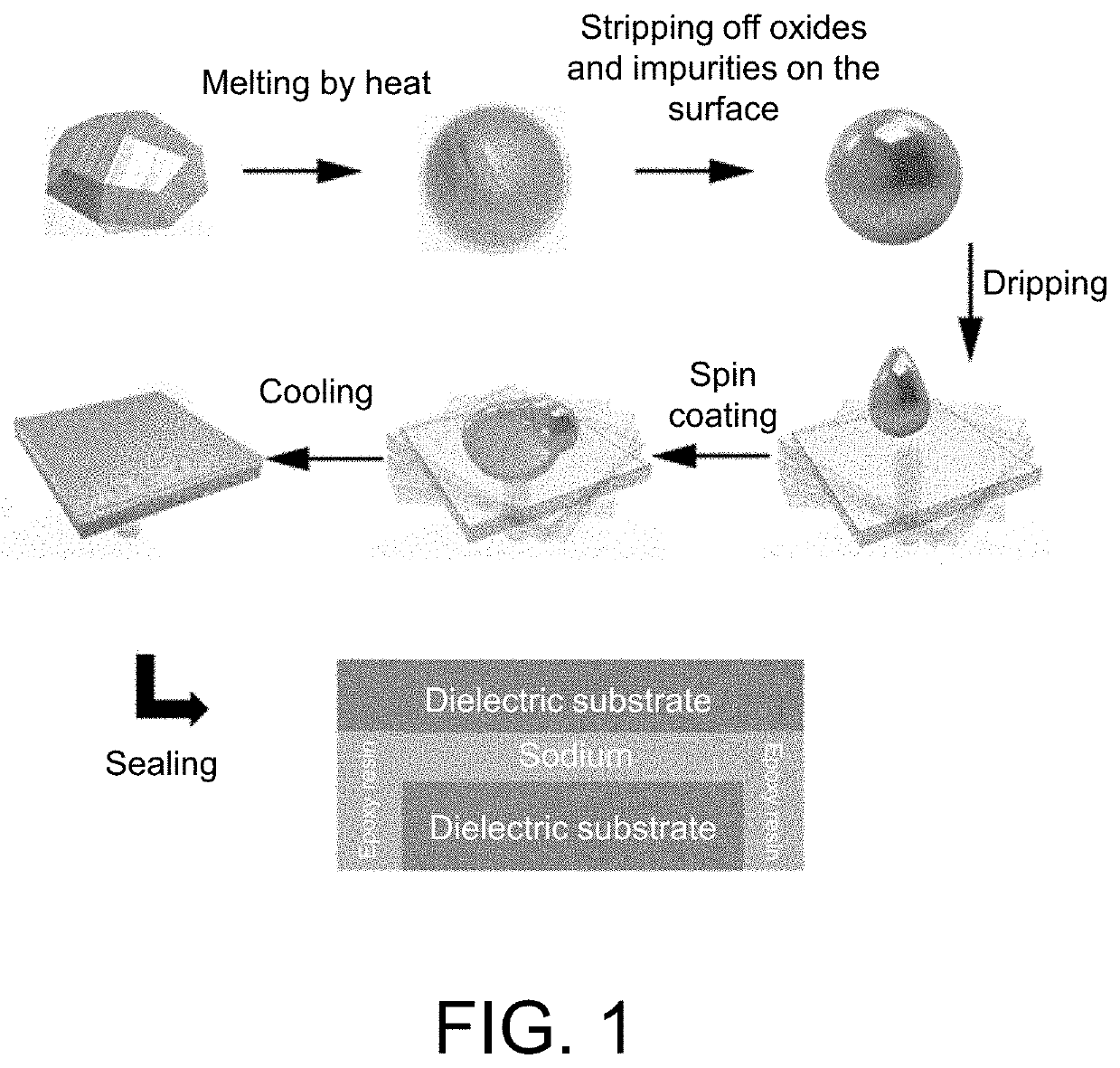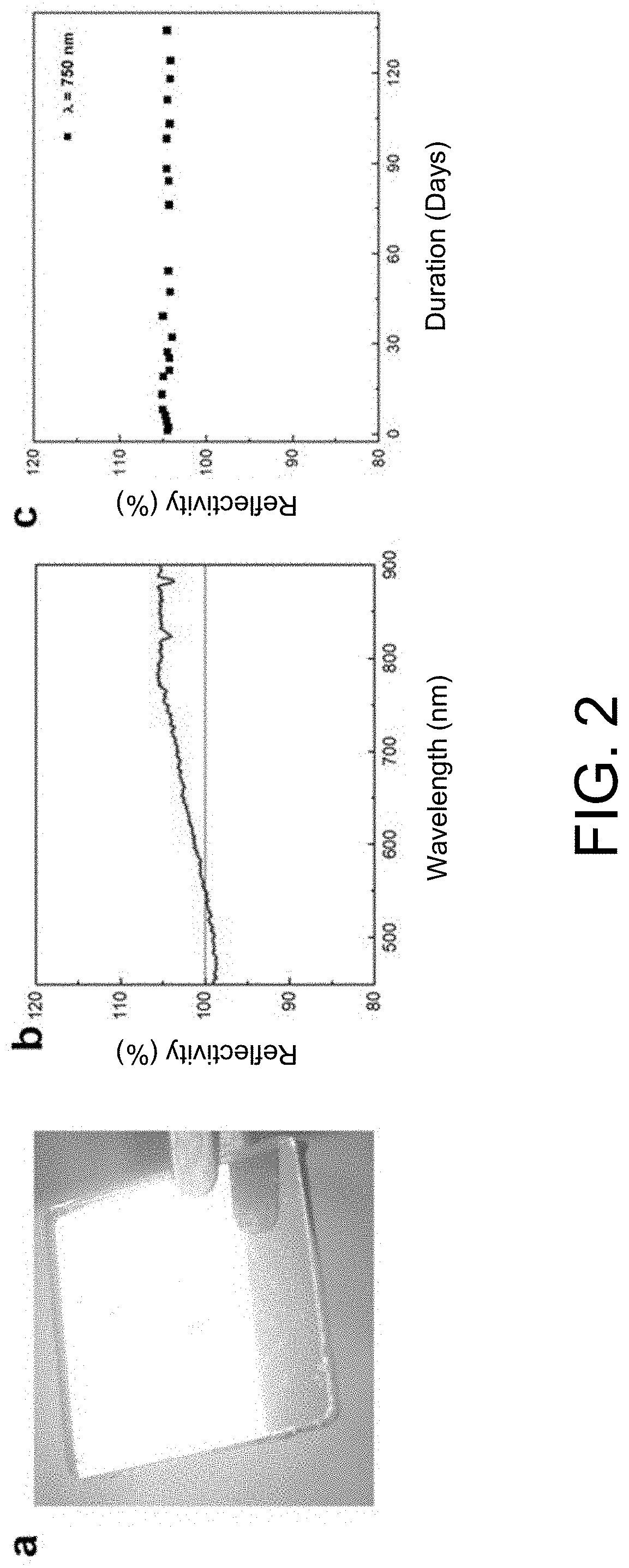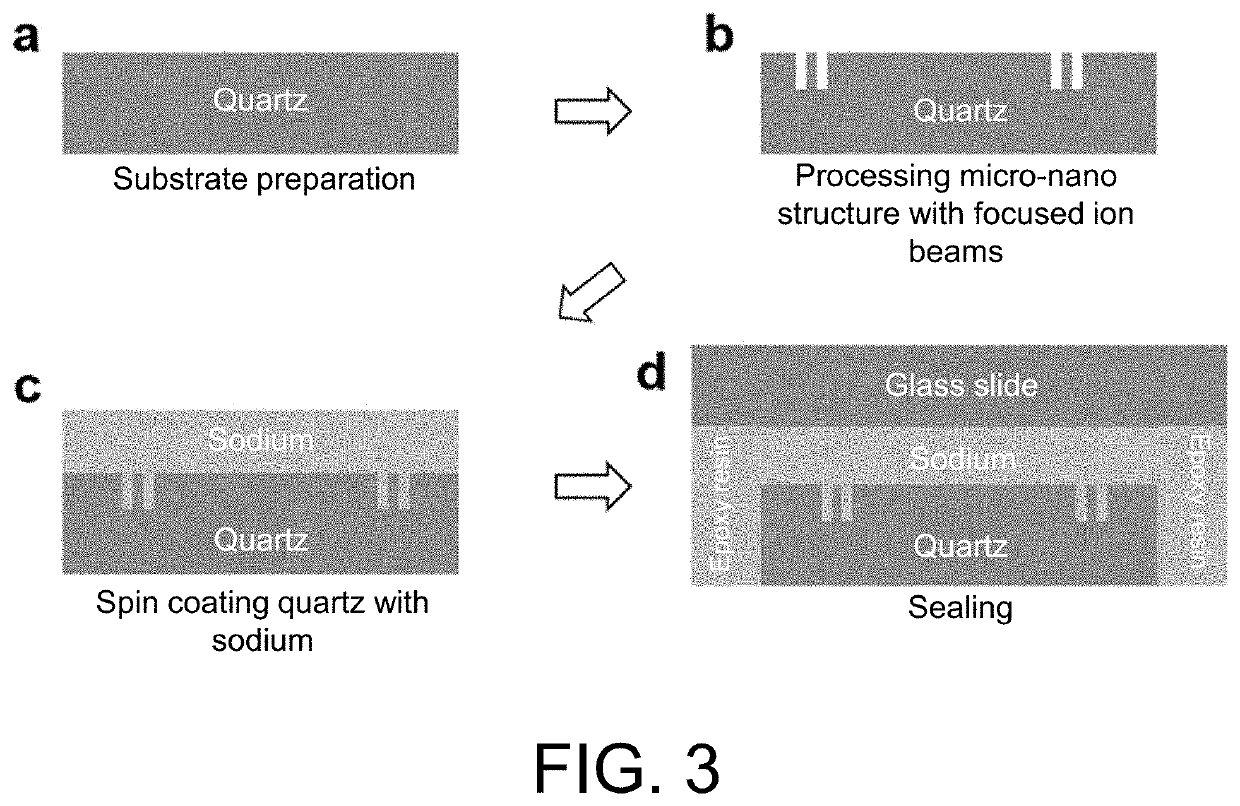Method for preparing sodium interface and method for preparing sodium-based optical structure device
- Summary
- Abstract
- Description
- Claims
- Application Information
AI Technical Summary
Benefits of technology
Problems solved by technology
Method used
Image
Examples
example 1
[0032
[0033]A smooth sodium interface was prepared by the following specific steps.
[0034]In a glove box filled with the inert gas argon, with the ambient oxygen concentration less than 20 ppm and the water concentration less than 20 ppm, the following steps were carried out:
[0035]1. a sodium block with a certain size was placed in a tungsten boat, oxides on the surface were cut off to enable the sodium block to have metallic luster, then the tungsten boat containing the sodium block was heated to 160° C. on a heating table to melt the sodium block into liquid, and oxides and impurities on the surface of the molten sodium were stripped off using stainless steel tweezers to form a liquid sodium pellet with metallic luster;
[0036]2. a smooth quartz substrate with a size of 1.5 cm×1.5 cm×0.2 mm was put into a glove box, and quickly spun on a spin coater; the quartz substrate with periodic structures was spin-coated with the pure liquid sodium metal by thermally-assisted spin coating at 16...
example 2
[0039
[0040]A sodium interface was prepared according to the method of Example 1, and the difference between these two methods is that, in the method of Example 2, a sodium block was melted at 180° C. by heat in step (1), and a quartz substrate was spin-coated with the resulting liquid sodium at 180° C. and 8000 r / min in step (2). The prepared sodium interface was close to that of Example 1, and both had a smooth and flat surface.
example 3
[0041
[0042]A sodium-based micro-nano optical structure device was prepared as in FIG. 3 by the following specific steps.
[0043](1) a micro-nano structure was processed on a dielectric substrate:
[0044]A. a silver film with a thickness of about 30 nm was subjected to physical vapor deposition on a quartz substrate with a size of 1.5 cm×1.5 cm×0.2 mm to form a conductive layer;
[0045]B. a periodic pore array with a pore size of 300 nm, a period of 700 nm and a depth of 55 nm was etched on the quartz substrate coated with silver using a focused ion beam, wherein the array had a length of 1.4 μm and a width of 0.7 μm, and a pore array with the same period size was processed at an interval of 100 μm, such that the distance between these two periodic arrays was 100 μm;
[0046]C. the silver on the surface of the quartz substrate was removed with nitric acid to obtain the quartz substrate only having the periodic pore arrays, as shown in b of FIG. 3. The quartz plate was ultrasonically cleaned f...
PUM
| Property | Measurement | Unit |
|---|---|---|
| Temperature | aaaaa | aaaaa |
| Fraction | aaaaa | aaaaa |
| Concentration | aaaaa | aaaaa |
Abstract
Description
Claims
Application Information
 Login to View More
Login to View More - R&D
- Intellectual Property
- Life Sciences
- Materials
- Tech Scout
- Unparalleled Data Quality
- Higher Quality Content
- 60% Fewer Hallucinations
Browse by: Latest US Patents, China's latest patents, Technical Efficacy Thesaurus, Application Domain, Technology Topic, Popular Technical Reports.
© 2025 PatSnap. All rights reserved.Legal|Privacy policy|Modern Slavery Act Transparency Statement|Sitemap|About US| Contact US: help@patsnap.com



